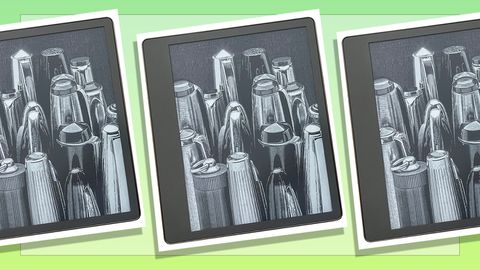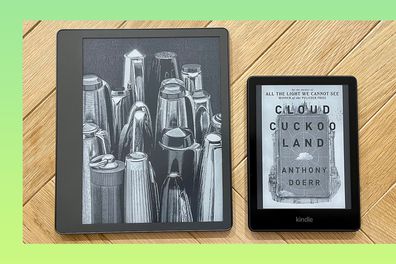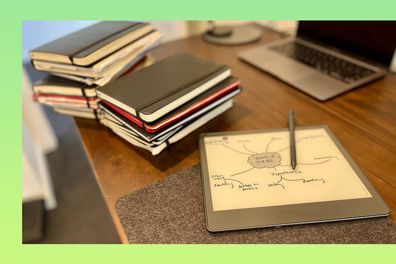Kindle Scribe: The e-ink notebook you didn't know you needed
2023-03-09 / News / 16107 Sees / 0 Comments
I've always been a huge book lover – and until I got a Kindle was a huge buyer of physical books. I love seeing books on shelves, their creased spines speaking of hours of past enjoyment.
But then I moved countries for a year and couldn't take my precious books with me. I'd seen the early Kindles and other e-readers and they frankly looked bland and clinical, lacking all the magic of physical books.
Then I actually got one and turned from doubter to evangelist in a matter of days.
I realised the magic of books is in the words, not the bindings. "Don't judge a Kindle by its cover," I quipped – and everyone told me to shut up.
Over the years, I've also been a huge lover of notebooks and after just a couple of weeks with Kindle's first foray into the digital notebook market, I'm a big believer in this too.
What is a Kindle Scribe?
After 16 years on the market, you're no doubt aware of the Kindle, which is into double figures in iterations and has sold tens of millions of units.
Seamlessly linked to Amazon's immense catalogue, it is the undisputed king of e-readers. But until now, Kindle hasn't made any advances into the growing e-ink notebook market.
The Scribe is a Kindle plus digital notebook. It retails for $549, but before you go running for the stationery cupboard and a good old Spirax pad, hear me out. Yes, for that much you could get a tablet and be able to access the internet and watch movies as well as taking handwritten notes. But then you would be missing the point of the Scribe. The beauty of this device is the e-ink screen, which emits much less disruptive blue light than a tablet, phone or laptop.
The e-ink makes this much more like a regular notebook, in the same way a Kindle is much more like reading a book than a tablet is.
It also helps you focus not to be able to access the internet at will.
Note taking
The Scribe is great for some tasks, less good for others. I found it was particularly useful for planning, drafting ideas, brainstorming and journaling.

This month I've committed to journaling everyday, first thing in the morning and last thing at night and I don't want either my phone or laptop zapping me with blue light at those times, so the e-ink display is perfect for that.
And when I'm at my computer or on my phone, there's always an excuse to be distracted by something like email. But when I sit down with the Scribe, it's much harder to justify putting it down and opening my laptop to check email.
Having not written much by hand for a few years, it took a couple of days to get used to holding a pen. But once I did, the pen was great. I had the Premium Pen (included in the $599 price tag), but you can also chose the Basic Pen for the $549 package.
Unlike an Apple Magic Pen, you don't need to charge either of these and the Premium Pen has a side button to switch to highlighter and an eraser.
The screen is surprisingly responsive and there's no delay between making strokes with the pen and the text appearing.
There are five thicknesses of pen and I loved being able to use the thicker ones. Using a felt tip marker in a notebook is so satisfying but the ink always bleeds through to the reverse side. Not with e-ink though!

Exporting notes
You can export Notebooks as PDFs to email or open them in the Kindle app – although you can't edit them in the app.
It would be nice to have handwriting-to-text conversion or to be able to edit the files on another device but hopefully Amazon will add these features in a later software update.
Reading books
With the novelty of having a digital notebook, it was easy to forget this is also a top of the range e-reader. In this capacity, the most obvious thing to note is the size.
Compared with my Oasis 2, the Scribe is a giant. But it's not like the Oasis or Paperwhite are pocket-sized themselves though, so if you're carrying it in a bag, you will be fine. And it feels kind of satisfying wielding such a big device – like reading a hardback compared with a paperback but without the heft of a large book. With the larger screen, I enjoyed being able to have the font larger without having to turn the page every few seconds.

As well as reading books, you can import PDFs and annotate them, which is a great feature particularly for people studying.
After two days of almost solid use, it had only gone down to 70 per cent and the specs suggest it can go for up to 12 weeks on a single charge.
Specs
In terms of size, it's more like an iPad than a regular Kindle with a 10.2 inch display at 300ppi resolution. It feels solid at 433g, but with a pleasingly thin profile at only 5.8mm.
The battery life is fantastic, as you'd expect from a Kindle. After two days of almost solid use, it had only gone down to 70 per cent and the specs suggest it can go for up to 12 weeks on a single charge.
The verdict
Before trying a Kindle Scribe, I really liked the idea of a digital notebook, but never got one because I thought I wouldn't actually use it. I couldn't imagine writing anything and not being able to do something with it immediately – email it, post it to Instagram, upload it to a blog.

But what I realised after a week with a Scribe is that I'd been missing out on a whole important area of writing that shouldn't be designed for immediate public consumption.
What this digital notebook reminded me of, is that "pen" and "paper" are perfect for teasing out creative ideas and allowing them to breathe before sending them out into the world.
And in our new digital world, the benefits of pen and paper are transferable than ever before.
More about“eink,eink display,EPIA,kindle Scribe,”'s article.
The original address《Kindle Scribe: The e-ink notebook you didn't know you needed》
